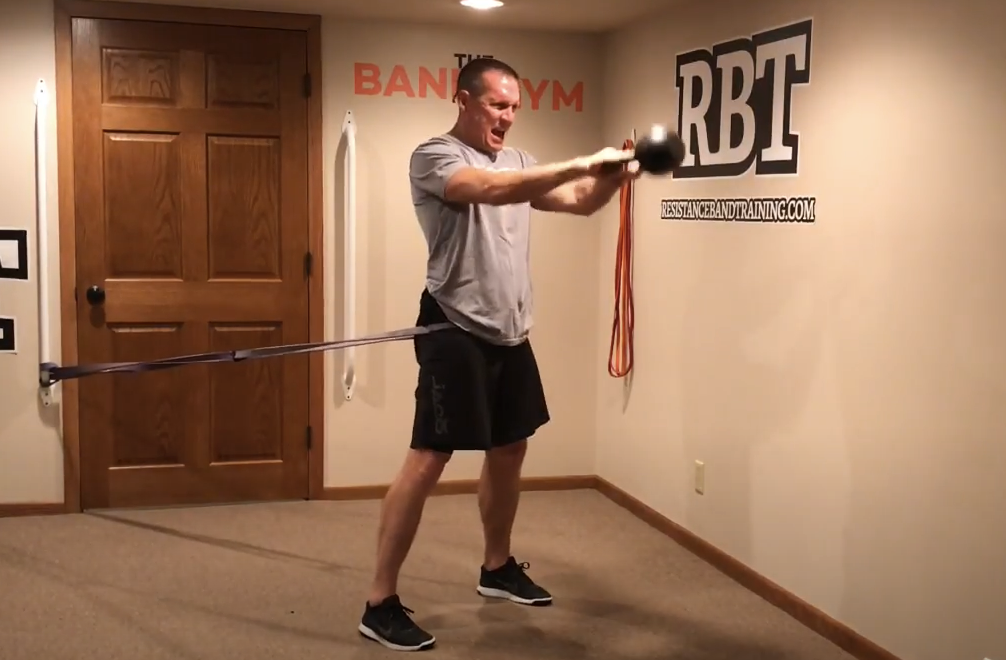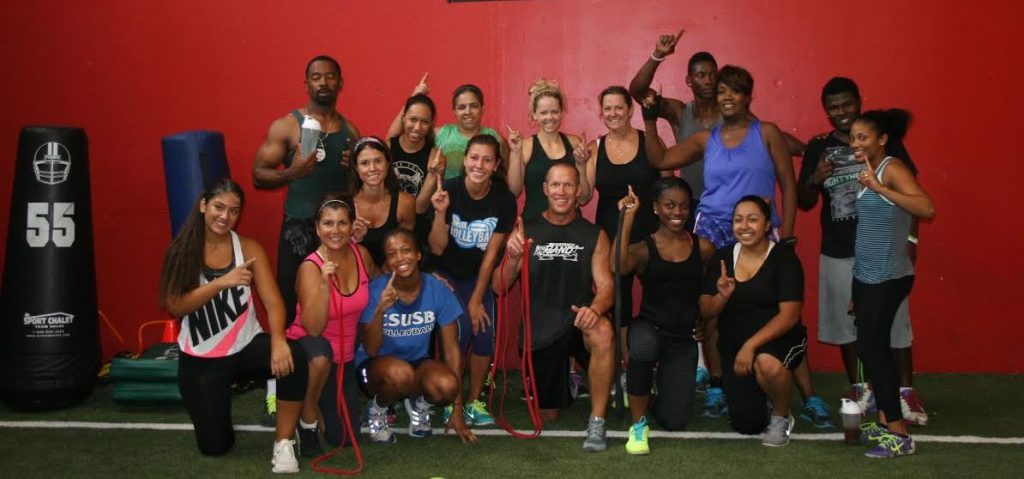Band training over 40 comes down to 5 simple mindset changes
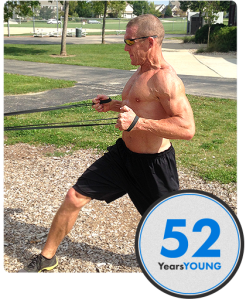
Frankly, it took me well into my late 30’s before I began to appreciate the importance of these changes.
It took just as long to commit to implementing each of them into all my workout routines.
Don’t wait until you’re 40 to ask yourself these 5 questions:
1. Are you trying to catch up?
I think when you reach 35 to 40 years young you start looking at making up time within your exercise program and subsequently start increasing workout time in hopes of getting better results. This often leads to unnecessary soreness and potential overuse injury.
Another factor to this overuse training mistake is you try to cram your 4 day per week workout routine into 2 days per week due to a crazy family and work schedule. In other words, you try to catch up by doing 2 long workouts vs. 4 normal length quality workouts.
Regardless of the case, this will lead to injury because joints, ligaments and muscles can’t adapt to those types of abrupt increases in training time and volume, especially as we age.
Fortunately, band training over 40 is easier on your ligaments and tendons. This allows you to over shoot a little bit and train more often without paying the price of injury.
It’s a fact that once a workout is lost, it’s lost forever and you cannot catch up, so just move on.
2. Are you staying consistent with stretching and stabilizing?
As you age your soft tissues are going to become less elastic and stiffer due to a decrease in tissue viscosity. For many fitness enthusiasts this will become apparent as they start moving through their 30’s but definitely by their 40’s.
Unfortunately, the #1 part of a workout people do the least is a pre-workout routine that incorporates low intensity dynamic stretching along with core activation and primary muscle activation.
As a coach I see it constantly, especially in gyms and in large group settings, where people show up just in time for the high intensity portion of the workout.
This is one of the worst things you can do for an active aging body, especially if it has not been working out routinely. You need to make sure you are routinely mobilizing, stretching and activating the core before every workout if the goal is to keep your body feeling and moving great.
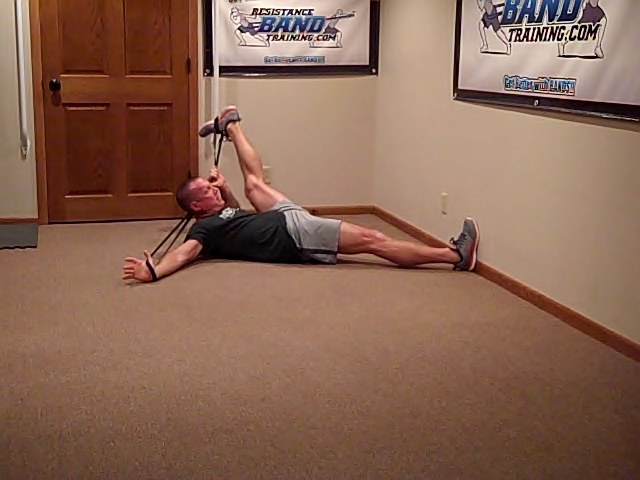
Band training provides you with 100’s of stretching, stabilization and mobility exercises that can be placed into a low intensity, short primer workout. See this Primer Workout example.
This is how you should routinely approach the first phase of your workout. It’s not a warm-up but a low intensity phase of the workout designed to prepare you for the upcoming higher intensity phase of the workout.
Fortunately, bands allow you to stretch, stabilize and mobilize yourself differently every day regardless of what your workout plan is for that day. You will discover that band versatility is your best training partner when it comes to moving freely and eliminating joint stiffness that mother nature likes to offer us.
3. Are you trading intensity for time?
As we get older, we get busier, which places a greater time demand on our workout schedule. If you are willing to trade intensity for time, fitting in regular workouts becomes easier.
The key is to make sure working out hard is relative to YOU and not someone else. What I mean is, make sure you understand what your perceived level of exertion is and start recording it regularly.
I try to record my workout exertion level after every workout so I can see on paper how often I felt I kicked butt and how often I felt sluggish. Doing this regularly will allow you to see patterns of how your body is recovering and performing. That will, in turn, allow you to make adjustments in your work out plan.
By simply recording a number between 1 and 10 in my phone after a workout, I have found that 2 high intensity workouts, and 3 moderate intensity workouts per week, work best for me. Make sure you determine what works best for your body by testing out different weekly workout formats.
4. Do you only strength train with weights?
Your muscles get stronger by challenging them with resistance. Who says that resistance has to be only free weights or machines??
If you have lifted weights for a long time, your joints are going to eventually start rebelling with inflammation that is perceived as pain and stiffness. It is challenging to workout with regular joint and soft tissue pain, knowing you are going to be recreating over and over again. This situation worsens if you are not following a pre-workout routine or a weekly recovery plan.
Fortunately with bands, you can train hard and not beat up your joints. By simply modifying the band tension, you can still perform high intensity multi-joint exercises like Push presses, Dead-lifts or Squats but not have to incur the joint forces you would with weights that lead to avoidable joint pain.

Resistance band training also allows you to go with high reps and low resistance to get more of a metabolic resistance training effect on days you want intensity but not all the heavy resistance on your joints.
Last, with resistance bands you can easily modify the movement or change up the line of force being applied to the body and thus avoid always following the same pattern of movement.
You will be amazed at how great your body responds when you strength train with bands and decrease free weight training periodically throughout the week.
5. Are you staying athletic?
As we age our nervous system’s excitability is going to slow down. That means our reaction time along with our general speed of movement is going to slow down.
Band training over 40 allows you to continually do drills that keep your nervous system excited and your reaction time 10 years younger which makes staying athletic a possibility. Constantly performing slow, weight lifting, strength based movements will lead to a nervous system that is slow in reacting.
Resistance band training allows you to perform reps faster without the risk of injury due to the ascending resistance that bands provide. Changing up rep speed keeps your nervous system’s excitability high and responsive.
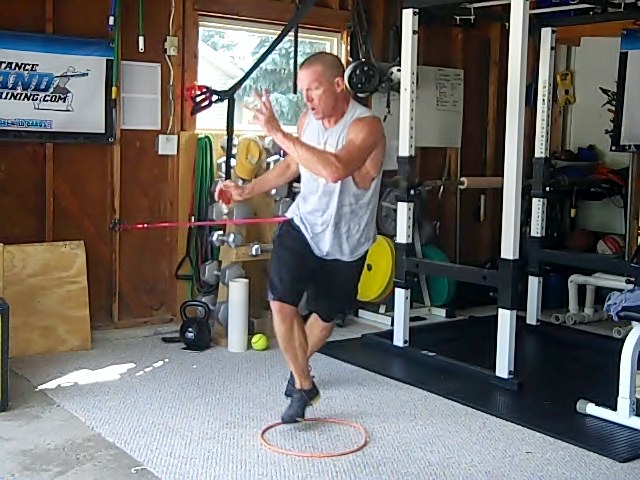
I know for some of you over 40, this can be a little scary. What you have to realize is that using low resistance that creates low force and allows you to focus more on speed of movement, rather than weight, is where you start.
Choosing to focus on speed of movement, versus adding more resistance, allows you to learn the movements and gradually get quicker with that movement. Regardless of the movement, by bringing in faster rep training you will see your body stay quicker than your counterpart who is only doing slow steady-state cardio and lifting weights.
Band Training Over 40
Hopefully these facts will keep you band training over 40. However it requires moving away from a traditional free weight training approach only and moving towards a different form of resistance training.
Implementing resistance band training into your workout routine will provide you with a more sustainable age friendly training approach that will get you looking, feeling and moving your best way beyond 40.
Don’t Go Alone Trying to Learn How to Train with Resistance Bands…
Take A BAND GYM VIRTUAL TOUR



